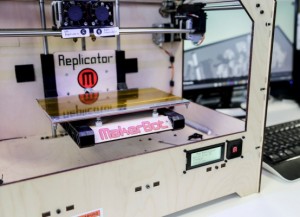US, Japan, four others lead in three new technologies with economic growth potential

A new report by the UN World Intellectual Property Organization (WIPO) says three frontier technologies hold the potential to boost future economic growth: 3D printing, nanotechnology and robotics, amidst the low world economic growth projections.
The World Intellectual Property Report 2015, “Breakthrough Innovation and Economic Growth” says the three new technologies, dominated by a handful of countries led by Japan and the US, hold potential to spark new business activity and economic growth just like the previous century’s game-changing innovations: airplanes, antibiotics and semiconductors.
The breakthrough in air transport increased economic growth exponentially with ripple effects. The antibiotic revolution significantly improved human health and life expectancy, with its attendant human capital accumulation and economic productivity, and semiconductors also sparked huge growth in some industries such as transport, chemicals and aluminium, and later triggered the ICT industry.
Japan and the United States lead the way, the other countries being Germany, France, the United Kingdom and the Republic of Korea. The World Intellectual Property Report 2015 says that together, these countries lead in patent applications filed for the three technologies, accounting for at least 75 per cent of the patents.
American entities are quite prominent in the applications filed for 3D printing patents, according to the report. The companies 3D Systems and Stratasys are the top two applicants and two other American companies General Electric and United Technologies are among the top ten.
“Three German companies – Siemens, MTU Aero Engines and EOS – as well as three Japanese companies – Mitsubishi, Hitachi, and Toshiba – complete the 3D printing top ten list.”
The Japanese lead in the area of robotics. With the exception of Bosch from Germany and Samsung from the republic of Korea, eight out of the top ten applicant companies for patents in robotics are from Japan: Toyota, Honda, Panasonic, Nissan, Sony, Hitachi, Yaskawa and Denso.
The spoils are shared a bit more evenly in nanotechnology patents. Samsung is the top patent applicant but collectively, three American entities file for most patents – the University of California, Hewlett Packard and IBM. Additionally, six of the top ten filers are from Japan – Nippon Steel, Toshiba, Canon, Hitachi, Panasonic and TDK.
While U.S. entities file collectively for most nanotechnology patents, Samsung is the top filer and s. IBM, the University of California, and Hewlett Packard of the U.S. complete the top ten list.
“Historical technological breakthroughs have been at the root of long-lasting expansions in economic output. Successful innovation, at the company level or across the wider economy, requires perseverance, particularly in periods of anaemic growth when innovation budgets are under pressure”, WIPO’s Director General Francis Gurry said
Behind these countries, WIPO says China is the only emerging middle-income country moving to join the group.
The intellectual property report identifies as the elements of successful innovation ecosystems, state funding for scientific research, support in lab to production transition, competitive market forces and vibrant financial markets, sound regulation practices and good public and private collaboration.
The report also notes that innovation is increasingly linked to research at universities and public research organizations. It says that there are more patents from the academic community for the 3 new technologies than there were for airplanes, antibiotics and semiconductors. Also, academic applicants account for about a quarter of the patents in nanotechnology from across the world.
By Emmanuel Odonkor
